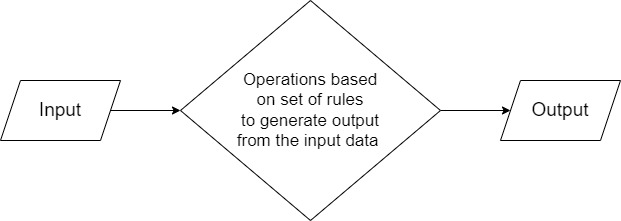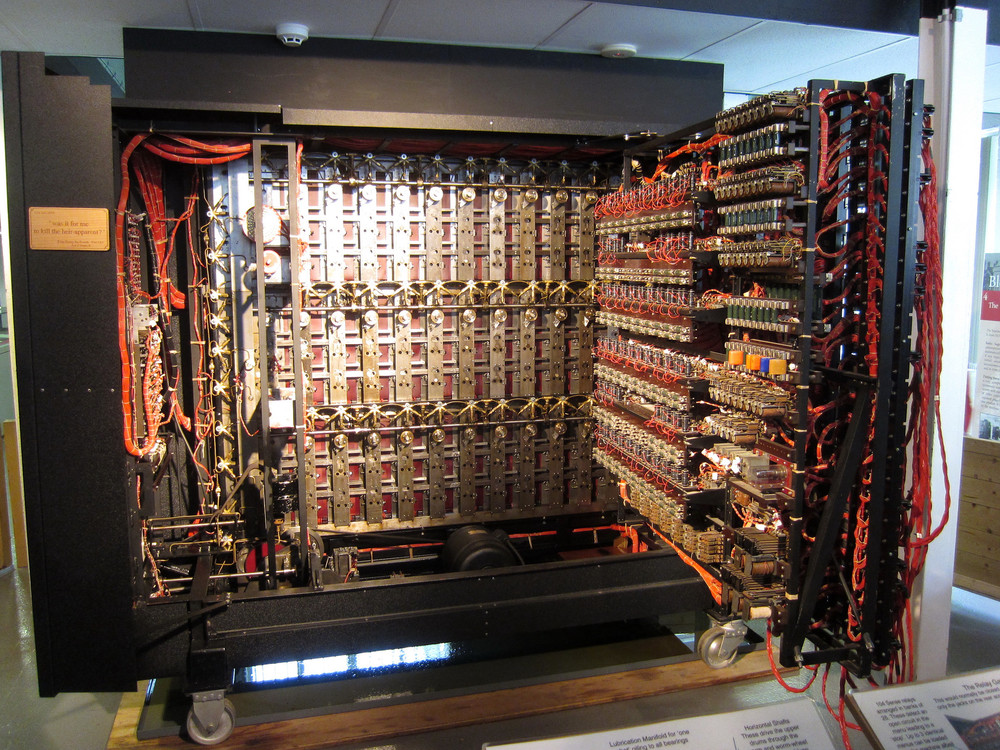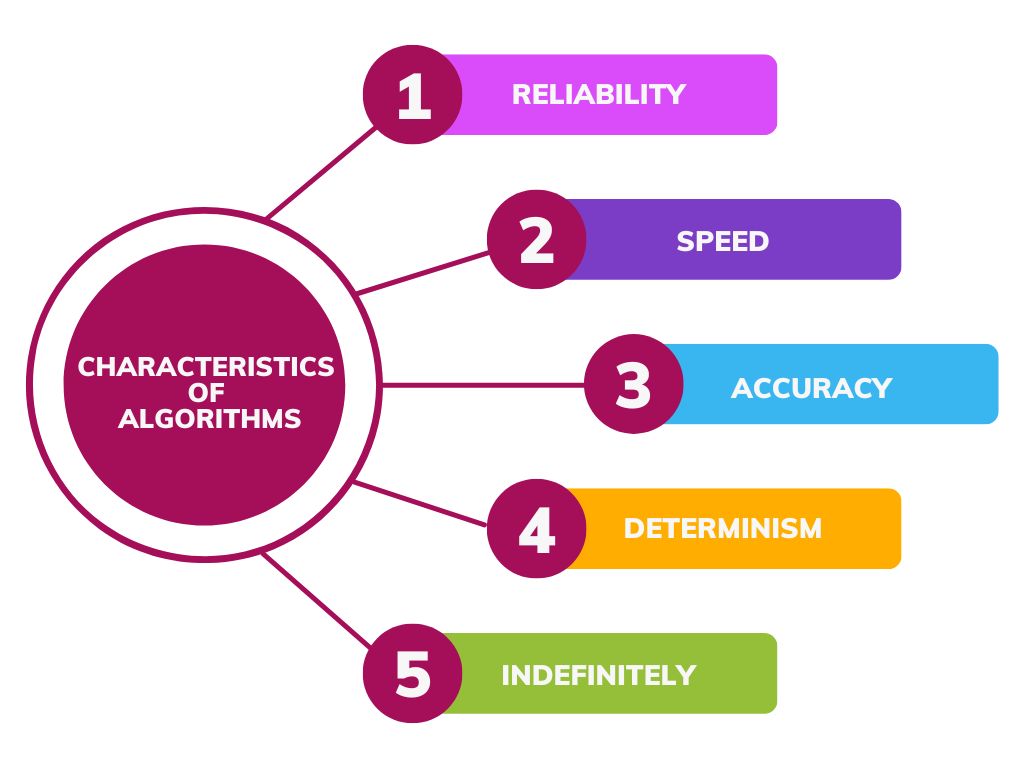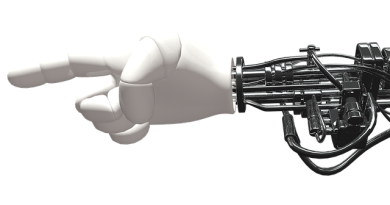What Is an Algorithm in Computer Science
Computer Science is a rapidly expanding field with immense potential, and understanding its fundamental concepts is essential to successfully applying the technology it has developed. Algorithms are one of those core fundamentals that underpin much of the activities in computer science and they are integral to many aspects of computing – from basic search functions in everyday web searches, to carrying out complex calculations used in AI applications. This blog post will delve into what an algorithm is what are the different types and why they’re important.
What is algorithm?

An algorithm is a set of instructions for solving a problem or performing a task in a computer program. It involves input data and processing it to generate an output result. The inputted data can be numbers, characters, words, images, or anything as long as the algorithm has been designed to input and process that type of data. A computer algorithm is usually coded or written in different programming languages, allowing it to be executed on computers and other devices. Computer algorithms are essential for many fields, ranging from computer science to mathematics and engineering, helping to make complex processes easier to manage and inspiring creativity through problem solving.
Brief history of algorithms
Algorithms have been a part of human life for centuries, with their original use being in mathematics. As computation devices and computer science developed, so did algorithms – from the early Boolean logic of George Boole to the Turing Machine developed by Alan Turing. With increased data storage capabilities and better data processing techniques, algorithms gained greater significance in how businesses make decisions and operate. Scientists applied them to more complex problems such as predicting stock prices, forecasting the weather, and analyzing medical images. Today, algorithms are used in many facets of life such as search engine optimization, online advertising, cybersecurity and social media such as TikTok algorithm. As technology continues to evolve, algorithms present a unique set of tools for problem-solving that will provide us with incredible opportunities for years to come.

What are the characteristics of algorithms
An algorithm is a set of instructions used to solve a problem. In computing, algorithms are important and serve as the backbone of many different areas such as computer vision and artificial intelligence. Key characteristics of algorithms include reliability, speed, accuracy, determinism and finiteness.

Reliability
Reliability is an important property of algorithms and software systems. Developers must ensure that an algorithm will produce the correct output for any given input, even in unexpected circumstances. This kind of dependability is critical to many businesses and industries that require trustworthy, reliable technology solutions. To optimize reliability, developers rely on the principles of robustness, reliability engineering, and fault-tolerance techniques. Thus, when algorithms are correctly developed and implemented, they can support and enhance a wide array of applications while lowering risk. In this way, reliability is an essential characteristic of algorithms that enables us to trust technology solutions are built with accuracy and integrity.
Speed
Algorithms are a cornerstone of many computing applications, with speed being the paramount characteristic that allows them to operate efficiently. When leveraging algorithms for the optimization of processes, companies can hone in on data-driven decision making and save time on manual labor. Advanced algorithms sift through massive data sets quickly and accurately, allowing for decisions to be made more quickly than ever before. Ultimately, speed is what makes algorithms so powerful and valuable – relying heavily on time-sensitive information and thus requiring rapid analysis and decision making that would otherwise be impossible.
Accuracy
Accuracy is an imperative component of algorithms and their applications, impacting everything from fraud detection and stock analysis to recognizing faces in social media photos. Put simply, the ability of an algorithm to produce accurate results is integral to its efficacy. As such, software engineers and data scientists around the world are constantly developing and optimizing algorithms to increase accuracy as much as possible. This includes validating an algorithm’s output against a set of trusted or previously collected data. With the growing prevalence of algorithms in our lives today, accuracy will remain a critical factor that ensures their safe, efficient use for many years to come.
Determinism
Determinism is an integral part of how algorithms function and process information. It entails the prediction that the same sequence of operations, given a specific set of inputs, will always generate identical results, meaning any variation in calculation will be excluded if all correct steps are followed. This makes deterministic algorithms particularly useful for a variety of activities because it ensures reliable outcomes even when dealing with large amounts of data or complex computations. Consequently, determinism is seen as one of the most powerful characteristics in an algorithm’s structure and design.
Indefinitely
Algorithms are an integral part of computer programming since they provide a well-defined set of instructions which can be easily interpreted by a computer. One of their key characteristics is finiteness—the fact that algorithms must come to an end point and cannot run indefinitely. The main benefit of this finite approach is that it limits the number of steps in the problem-solving process, making it easy to refer back to any specific stage without having to run the entire algorithm again. Moreover, constraining algorithms within a finite set of instructions also drastically reduces the chances of error in their execution. While finiteness may seem like a limitation, it ultimately provides advantages that make algorithms an invaluable tool for computer programming.
The use of algorithms in computer science?
Algorithms are an essential component of computer science, and their use is becoming increasingly widespread. Algorithmic design can play an important role in producing efficient and optimal software solutions, which are especially valuable in time-sensitive applications such as artificial intelligence and cognitive robotics. Algorithms also have significant implications for data security and privacy, as the right algorithm can be used to protect data from unauthorized access. Ultimately, the power of algorithms lies in their versatility; with a few simple instructions, complex tasks can be simplified or even automated to make life easier for its users.
Types of algorithms
Algorithms are an essential tool of modern computing, having a wide range of applications. Types of different algorithms vary depending on their purpose, ranging from simple sorting algorithms and searching algorithms to more complex data mining techniques and artificial intelligence networks trained to think for themselves.
1. Brute force algorithm
A brute force algorithm is a type of algorithm that uses a simple, straightforward approach to solve a problem. The algorithm typically tries every possible solution until it finds the one that works. While brute force algorithms can be very effective, they can also be very time-consuming and may not be practical for large problems.
2. Divide and conquer algorithm
A divide and conquer algorithm is a type of algorithm that breaks a problem down into smaller subproblems, solves each subproblem, and then combines the solutions to the subproblems to find a solution to the original problem. This type of algorithm is typically more efficient than a brute force algorithm and can be used to solve problems of any size.
3. Dynamic programming algorithm
A dynamic programming algorithm is a type of algorithm that solves problems by breaking them down into smaller subproblems and then solving each subproblem only once. This type of algorithm is typically more efficient than a brute force or divide and conquer algorithm and can be used to solve problems of any size.
4. Greedy algorithm
A greedy algorithm is a type of algorithm that makes decisions by choosing the option that seems to be the best at each step. While this type of algorithm can be very effective, it can also lead to suboptimal solutions if the options at each step are not chosen carefully.
5. Heuristic algorithm
A heuristic algorithm is a type of algorithm that uses heuristics, or “rules of thumb”, to make decisions. This type of algorithm does not guarantee to find the optimal solution, but it can often find a good solution quickly. Heuristic algorithms are often used when the problem is too large to solve using an exhaustive search or when time is limited. It is often used for machine learning algorithm
6. Local search algorithms
Local search algorithms are a type of heuristic algorithms that focus on finding solutions that are “close” to the current solution, rather than searching the entire space for the optimal solution. Local search algorithms can be very effective, but they can also get “stuck” in local optima, or suboptimal solutions, if they do not have enough information about the problem or if the search space is large.
7. Metaheuristic algorithms
Metaheuristic algorithms are a type of heuristic algorithms that use multiple heuristics to find solutions. Metaheuristic algorithms are often used when traditional methods such as local search fail to find an acceptable solution or when time is limited. They can be very effective, but they can also be difficult to design and implement correctly.
8. Simulated annealing algorithms
Simulated annealing algorithms are a type of metaheuristic algorithms that use randomness to escape from local optima and find better solutions over time. Simulated annealing algorithms are often used when traditional methods such as local search fail to find an acceptable solution or when time is limited
9. Recursive algorithm
A recursive algorithm is a type of algorithm that solves problems by decomposing them into smaller and smaller subproblems. This approach can be highly efficient and effective, as the algorithm essentially keeps breaking the problem down until it is solved, making each step less complex. Additionally, recursive algorithms can also be useful when dealing with data structures that may have to be completed in stages, such as a linked list or a tree. Understandably, recursive algorithms are extremely powerful tools and are used often in programming languages; however, they can also lead to potential issues if they are not optimized. For this reason, advanced programmers should utilize them only if properly equipped with the knowledge needed to avoid inefficient code or stack overflow risks.
9. Sorting algorithms
Sorting algorithm is a type of algorithm that orders elements in an array. It rearranges the array’s element in either an ascending or descending order and can be used for various program applications. A sorting algorithm’s success is determined by its speed and memory use, making some algorithms better suited to certain problems than others. Importantly, this type of algorithm can reduce time complexity for input validation tasks, thus streamlining and making easier many basic programming processes.



